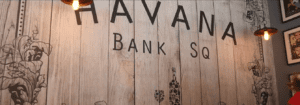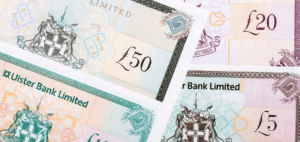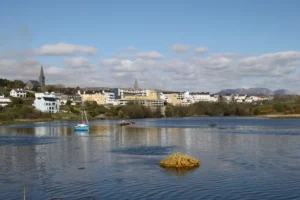Northern Ireland Tourism Statistics – 2024 Updated
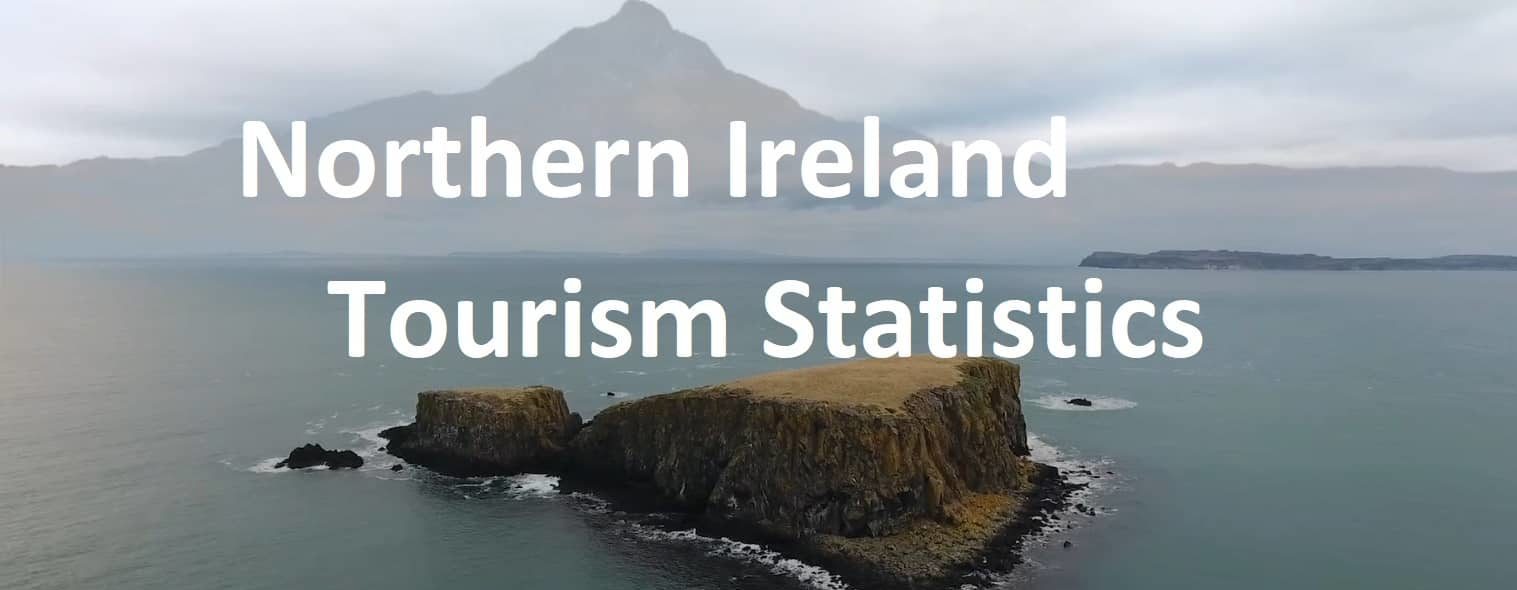
Updated On: February 19, 2024 by Aya Radwan
Northern Ireland is a wonderful place to pick as your next travel destination. From historical landmarks and beautiful landscapes to buzzing cities, picturesque towns and the famous settings used for one of the world’s most popular TV shows of all time, (Game of Thrones of course) there’s something for everyone here.
Travelling anywhere around the world, including Northern Ireland was deeply restricted during the past few years due to the Covid-19 pandemic. Tourist numbers have fluctuated like the racing sea waves during the tidal seasons.
This article about Northern Ireland Tourism Statistics will fully elaborate on the changes we have experienced in the industry during the last decade, examining tourism before, during and after a worldwide pandemic. Our statistics go back as far as 2012 and this article is regularly updated to include the most recent findings and surveys each year.
Northern Ireland Tourism Statistics
When discussing statistics about tourism in Northern Ireland, there are several fields where research takes place in order to compile the figures you see. These fields include:
- Tourism Performance
- Accommodation
- Traveller Experience
- Local visitors
- Visitors from the United Kingdom
- Visitors from the Republic of Ireland
- Global visitors
Statistics pertaining to tourism in Northern Ireland are conducted and published by the NISRA (Northern Ireland Statistics and Research Agency) and the CSO (Central Statistics Office). The NISRA publishes both quarterly and annual statistics’ reports to reflect how the tourism industry is doing.
There are several methods through which numbers are collected to use for statistical purposes. These methods include the number of visitors, tickets sold, trips booked, rooms booked, admission tickets at local attractions and levels of spending.
Before jumping straight into the article, here are the various sections you will find below. Click on a section to skip ahead to that year.
- Northern Ireland Tourism Statistics Barometer – Reviewing 2022 and forecasting 2023
- Northern Ireland Tourism Statistics 2022
- Northern Ireland Tourism Statistics Barometer 2021/2022
- Northern Ireland Tourism Statistics 2020/2021
- Northern Ireland Tourism Statistics 2019
- Northern Ireland Tourism Statistics 2018
- Northern Ireland Tourism Statistics 2017
- Northern Ireland Tourism Statistics 2016
- Northern Ireland Tourism Statistics 2015
- Northern Ireland Tourism Statistics 2014
- Northern Ireland Tourism Statistics 2013
- Northern Ireland Tourism Statistics 2012
Northern Ireland Tourism Statistics Barometer – Reviewing 2022 and forecasting 2023
Tourism Northern Ireland recently released their Statistic Barometer for 2022/2023 which was commissioned in October of 2022. This survey observed the performance of the tourism industry in Northern Ireland and was conducted to assess:
- The performance of the different sectors of the tourism industry throughout the year (January – September)
- Business performance over the Summer (June-Sept 2022)
- Expectations for the remainder of 2022 and beyond into 2023
- Booking trends, positive results and points of concern for the future
- The effect of rising operating costs on businesses
You can read the full pdf report on TNI’s website; we have included the main findings and statistics below.
This year 340 responses were collected, 254 of these responses were conducted via a concurrent phone survey, while the remainder were completed through an online survey.
The Summer period (June to September) saw higher turnover for 39% of respondents when compared to 2019. 36% recorded no change in 2022 while 21% actually experienced a decrease in turnover since pre-Covid levels.
Over two thirds of respondents had reported either returning to the same levels of profitability as 2019 (35%) or had exceeded these levels of profitability (34%)
Overall the YTD performance was positive. The positive performance of close to home markets (NI, ROI & GB) has benefited many businesses and helped them to recover and even exceed pre-Covid 19 levels. However, approximately one quarter of businesses are still experiencing reduced visitor volumes.
Two thirds of respondents saw international visitor volume either return to (31%) or exceed (32%) pre-Covid levels. However almost 4 in 10 (37%) have yet to return to 2019 volumes.
The outlook for the remainder of 2022 and 2023 is generally positive, however the impact of rising energy costs in particular, as well as rising operating costs, a reduction in disposable income and staffing problems are causes for concern.
Businesses have reasons to be positive however. The combination of the return of overseas visitors as well as a steady stream of repeat visitors are a good sign for the tourism industry.
Here are some interesting results from the survey:
- 31% of respondents were running at full capacity, a 5% increase from the previous year. 67% of businesses are running with some form of limited capacity while only 2% of businesses remain closed. It is worth noting that only 11% of respondents were operating at less than half capacity.
- Almost 2 in 5 (38%) businesses reported higher turnover from January – September 2022 in comparison to the same time period in 2019. Just over a quarter (26%) recorded no change, while 30% reported a decrease on turnover versus January – September 2019
- NI domestic, ROI and GB market performance benefitted many businesses, however approximately 25% of business reported reduced levels of business from these key markets
- 31% of providers have seen international visitor volumes return to pre-Covid levels. Another 32% have actually exceeded pre-Covid/2019 levels, with 37% yet to return to these levels.
- In terms of booking trends in 2022, one in seven (14%) identified enquiries about pets as a new trend, suggesting a business growth opportunity for those willing to accommodate animals.
- 50% of businesses cite the return of overseas visitors as a reason to be positive. 44% agree that repeat visitors are another positive sign.
- Energy costs pose the main cause of concern for a majority of businesses (68%). 62% of respondents agree that reductions in people’s disposable income is another cause for concern, while higher operating cost besides energy worries 41% of businesses.
- 27% of respondents cited recruitment problems as concerning, while 24% mentioned staff retention and training as a concern. Increased market competition poses a threat, according to 16% of businesses that are concerned by the increase in people going abroad.
- Changes that were made in response to rising operating costs/cost of living increases were made by 59% of respondents who either raised their prices or were intending to do so.
- 41% of respondents were reducing their energy consumption due to rising costs. 20% were spending more time searching for better deals with suppliers and 17% reduced their opening days and hours due to increased costs. 16% of respondents were going to cut some products/services in response to rising costs.
- For the rest of 2022, the outlook is mainly positive. 26% of businesses have increased advanced bookings for the remainder of the year compared to normally, while another 40% approximately have the same levels as typically expected.
- Almost 3/4 of respondents expected the volume of overall business to be higher (39%) or the same (34%) as pre-Covid levels.
- Looking into 2023, 24% of respondents say that advanced bookings are higher than normal, while 49% say levels are the same. Outlooks are once again generally positive. 45% of respondents expect business volume to be higher than pre-Covid levels. 29% expect the same levels as 2019, while one quarter are expecting a downturn in comparison to pre-Covid levels.
- Overall, 70% of respondents were confident about running a tourism business profitably for the rest of 2022 and throughout 2023. 25% were not confident and 5% were unsure.
| Trend | Description | Impact |
|---|---|---|
| Summer Performance (June-Sept 2022) | 39% saw higher turnover than 2019, 63% same or lower | Mixed |
| Profitability | 69% returned to or exceeded 2019 profitability | Positive |
| Close-to-home Markets (NI, ROI & GB) | Benefited many businesses, but 25% saw reduced volume | Mixed |
| International Visitor Volume | 63% back to or above 2019 levels, 37% not yet recovered | Positive |
| Outlook for 2022/2023 | Generally positive, but concerns about rising costs | Mixed |
| Reasons for Optimism | Return of overseas visitors, repeat visitors | Positive |
| Concerns | Rising energy costs, reduced disposable income, staffing issues | Negative |
| Accommodation Capacity | 31% at full capacity, 67% with limited capacity | Positive |
| Booking Trends | Pets as a new trend (14%) | Positive |
| Adapting to Rising Costs | 59% raised prices, 41% reduced energy consumption | Mixed |
| Advanced Bookings for 2022/2023 | Mostly positive, with some expecting similar or lower volume | Mixed |
| Confidence in Profitability | 70% confident, 25% not confident | Positive |
While the future is uncertain, many businesses are beginning to feel cautiously optimistic about their future in the tourism industry for the rest of 2022 and beyond.
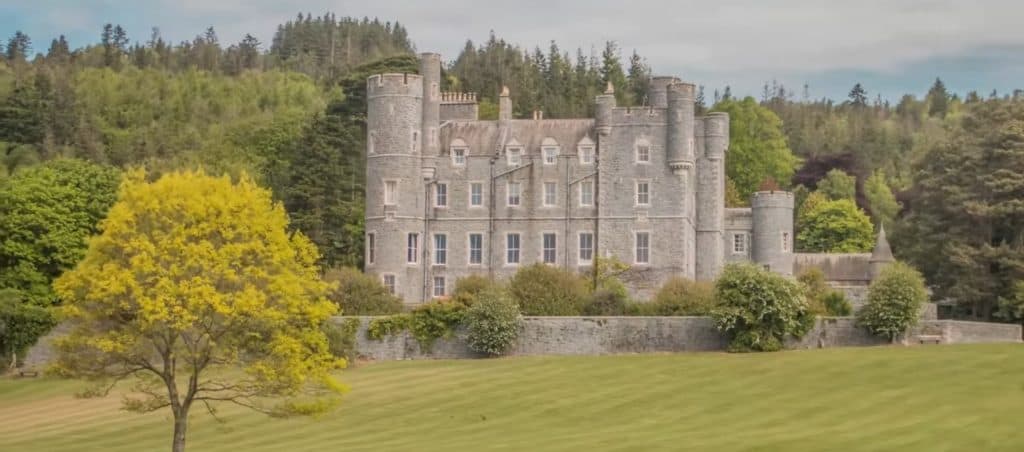
Northern Ireland Tourism Statistics 2022
The tourism sector, as with all sectors, had a rocky road to recovery, with occasional outbreaks of the pandemic, but vaccinations and the enforcement of restrictions and social distancing have helped businesses to start to get back on track during this year. While the tourism industry struggled as a whole, businesses remained resilient and over time restrictions began to lift. These are the statistics of the tourism sector in Northern Ireland, up until June 2022.
- Twenty-four out of every 100 domestic tourists took overnight trips in Northern Ireland, in the period of 12 months up to March 2022. This number is lower than it was before the pandemic, where 31 out of every 100 people took overnight trips. However, this number is a great increase in comparison to the period of 12 months until May 2020.
- According to the Northern Ireland Travel Survey, 5% of the trips taken by Northern Ireland residents were day trips.
- There were more than 44 million traffic crossings reported by the authorities at the NI/IE border in the period of 12 months up to April 2022, including the highest number of caravan crossings since 2014, with 449,000 caravans.
- In the period of 12 months up to March 2022, air passenger flow was 4.2 million through Northern Ireland’s airports. While this flow is about half of what it was in the period of 12 months up to March 2020, it is considered the highest number since the Covid-19 pandemic.
- Northern Ireland residents chose the accommodation and food sector to be their second industry to support, with 8% of all the spending targeted for this sector through the Northern Ireland High Street Scheme.
- In the period of 12 months up to May 2022, 100 cruise ships docked in Northern Ireland, carrying 366,000 passengers and crew on board.
- In the period of 12 months up to April 2022, about 1.97 million hotel rooms were sold in Northern Ireland, which is considered to be the largest number in the period of 12 months up to April 2020.
- In the period of 12 months up to April 2022, about 421,000 rooms were sold in Guesthouses and B&B across Northern Ireland, which is considered the largest number in the period of 12 months up to March 2020.
- In the period of 12 months up to March 2022, 36% of Northern Ireland residents intended to take an overnight trip in Northern Ireland.
- Between September 2021 and March 2022, when people were asked whether or not they visited a local attraction in the past seven days, 3% of the respondents answered yes.
- The percentage of people stating that Covid-19 has affected their personal travel plans has been decreasing, until it reached 39% by March 2022.
- The percentage of people stating that Covid-19 has affected their business travel plans has been decreasing, until it reached 8% by March 2022.
- When asked whether someone in their household had to cancel an overnight trip due to Corona virus since March 2020, 34% answered with yes and 66% said no.
- When asked about the destination of a cancelled overnight trip, if they had one, 20% said it was in Northern Ireland, 18% said it was to the Republic of Ireland, 17% said it was to Great Britain while 45% said it was to other destinations.
Northern Ireland Tourism Statistics Barometer 2021/2022
A survey regarding the performance of the tourism industry in Northern Ireland was conducted during the summer period of 2021, to assess the performance of the different sectors of the industry through the remainder of the year, as well as expectations for 2022 and moving forward, especially recovery after the pandemic.
369 tourism businesses responded to the inquiry of the survey. Results show that in general, the summer period was challenging for many sectors due to restrictions, international travel as well as behaviour related to the pandemic, while other sectors were showing signs of recovery.
Several businesses benefitted from growth in both the Northern Ireland and Republic of Ireland markets, such as hotels and accommodation sectors. However, the extent of the impact of such growth differs according to sectors.
There are still many challenges facing a large number of businesses, as they said these challenges hinder their growth. Such challenges include energy costs, overhead costs, staff recruitment or retention and even problems within the supply chain. Many businesses said these factors are having a negative effect on their business.
More than half of the responding businesses had successfully applied to the “We’re Good To Go” scheme. This scheme was an initiative set up by Visit England, Visit Scotland, Visit Wales and Tourism Northern Ireland to help participant businesses in displaying Covid-19 restrictions adopted in order to maintain the safety of visitors.
When asked to choose one means of support that isn’t financial, the majority of businesses chose marketing as their priority for the upcoming year of 2022. It was almost agreed upon that businesses will need time to recover from the effects of the pandemic, but they expect to be fully recovered by 2023.
Here are the results of this survey:
- While 26% of businesses were running at full capacity, the majority of businesses, 67%, ran at a reduced capacity, and only 7% of businesses remained closed.
- Forty-nine percent of businesses, which is almost half of the responding businesses, reported there was a lower turnover during the June – September period in 2021, in comparison to the same period in 2019. Twenty-five percent of the responding businesses reported an increase in turnover, and around 19% of the responding businesses reported there was no change in the turnover.
- A great number of businesses, about 61% of businesses, reported there was a decline in the Great Britain market. Twenty-four percent of businesses reported the Great Britain market was stable for them, while 17% of businesses reported it was higher for them.
- Eighty-six percent of responding businesses reported there was an overall decline from the overseas market.
- Of the many challenges the responding businesses are facing, 44% of them said it was the cost of energy, followed by 38% facing overhead costs and 21% facing supply chain problems. In addition to these, businesses that require hiring staff cited that staff recruitment and retention was one of the participating factors having a negative effect on their businesses.
- There were two major factors that had a positive impact on the responding businesses. An increase in staycations reported by 30% of businesses and the easing of restrictions enforced for the pandemic reported by 20% of businesses.
- Fifty-four percent of the responding businesses had applied for the “We’re Good To Go” scheme, which they stated helped their businesses greatly.
- A great number of the responding businesses, 44% of businesses, cited that marketing is the top method through which they could get support over the upcoming 12 months. Forty percent of businesses said it was capital development grants, while 39% stated it was getting help with their websites and online presence. Thirty-six percent of businesses cited getting help with digital skills while 35% cited financial support in general.
- When asked to choose one means of support, that isn’t financial, the majority of businesses chose help with marketing as the factor that would have the most positive effect on their businesses.
- While more than half of the responding businesses had successfully applied for the WGTW scheme, three-fifths of them stated the scheme was good for their businesses. Thirty-seven percent of applicants had mixed opinions about the scheme while 4% stated it was no good to their business.
- More than half, 52% of responding businesses, anticipated that the overall business volume during the last quarter of 2021 from October to December will be down, in comparison to the same period from 2019.
- At the time of this survey, the number of advanced bookings in 2022 were down. However, not many consumers book their trips well in advance, which makes it hard to predict the market.
- Advanced bookings in Northern Ireland indicate that the local market will go on steady in 2022, with two-thirds of businesses reporting either the same or increased bookings for the upcoming year.
- 33% of the responding businesses said that they don’t know whether or not they will be able to financially recover from the effects of the pandemic. The majority, however, about 61% of businesses stated they expect to start recovering by the end of 2022 and the beginning of 2023, while 12% of the businesses stated they have already financially recovered.
- The larger number of responding businesses, about 55%, said they expected the tourism sector to start recovering either from the middle of 2022 or the beginning of 2023. While one in each five businesses stated they didn’t know what to expect.
- Covid-19 restrictions were chosen by 54% of responding businesses as the main reason for the difficult recovery of their businesses.
Northern Ireland Tourism Statistics 2020 – 2021
The NISRA tourism branch stated that due to problems with their data collection because of the Covid-19 pandemic, they were unable to publish their regular annual complete reports. This is why statistics about the condition of the tourism industry in Northern Ireland in 2020 is mainly in cooperation with other research facilities.
Due to the effects of Covid, the tourism industry was effectively closed or operating at a limited capacity for many months in an attempt to reduce the spread of the virus. As a result the statistics for this year vary extremely from 2019.
- The majority of staff, 81%, working in tourism related industries by April 2020 were working part-time.
- The majority of staff, 62%, working part-time in tourism related industries by April 2020 were on reduced pay while 45% who worked full-time were on reduced pay.
- When the Covid-19 restrictions were lifted on July 3rd, 2020, many accommodation businesses did not open, for several reasons. The majority which is 20% of businesses stated there wasn’t enough interest from customers, 17% stated they didn’t open due to healthcare reasons, 17% as well stated they couldn’t enforce rules of social distancing in place, 12% stated they weren’t financially viable, 7% were in fact considering closing their business entirely before the pandemic even started while 3% of businesses stated the majority of their customers come from overseas so it wasn’t worth opening back up when there was no demand.
- When domestic tourists were asked whether or not they holidayed during the summer of 2020 and where did they go, 26% of them stated they holidayed in the Republic of Ireland, 23% stated they holidayed in Northern Ireland, 6% stated they holidayed in Great Britain while only 4% said they holidayed abroad.
- When people were asked how they felt the effect of Covid-19 on their plans, the majority which is 55% stated the pandemic affected their personal plans, while 12% stated the pandemic affected their work plans.
- Two of the most visited attractions in Northern Ireland; the Giant’s Causeway and Titanic Belfast saw a massive decrease in the number of visitors. The former received only 138,500 visitors in 2020 which is an 86% decrease, while the latter received only 150,000 visitors in 2020 which is an 82% decrease.
- The total number of visitors to local attractions decreased by more than half, from a total of 16,510 in 2019 to a total of 6,090 in 2020.
- Since the last cruise ships docked in Northern Ireland ports in 2019, no ships docked for the entirety of 2020. It wasn’t until March 2021 that one ship docked in Belfast port with 750 passengers and crew on board. Then from June 2021 until September 2021, a total of 67 cruise ships docked in Belfast port, with more than 76,000 passengers and crew on board.
- In 2020, there were 143 operating hotels in Northern Ireland, with a total of 9,639 rooms available and 21,642 bed spaces available in these hotels.
- In 2020, there were a total of 924 Guesthouses, B&B and guest accommodation available in Northern Ireland, with a total of 3,866 rooms available and 8,793 bed spaces available in these facilities.
- When asked, 43% of respondents said they had problems with getting a refund for their cancelled air travel due to Covid-19, between the period from May 2020 to July 2020.
- Fourteen percent of respondents said they had problems with the organising companies in getting refunds for cancelled events due to Covid-19, between the period from May 2020 to July 2020.
- Twelve percent of respondents stated they had problems getting refunds for cancelled accommodation such as a villa or a cottage because of Covid-19, between May 2020 to July 2020.
- Eleven percent of respondents stated they had problems getting refunds for hotel reservations that had to be cancelled due to Covid-19, between May 2020 and July 2020.
- Eleven percent of respondents also stated they had problems with the companies through which they had booked all-inclusive holiday travels, between May 2020 and July 2020.
- Between April 2020 and August 2020, when people were asked whether they’d visited a park or a public green space in the past seven days, 47% of them answered with yes.
- Between April 2020 and June 2021, when people were asked whether or not they visited a local attraction in Northern Ireland in the past seven days or not, only 3% stated they did.
- When asked whether they felt comfortable or not visiting Northern Ireland in the following five years, after the country’s response to the pandemic crisis, 34% respondents said they felt comfortable, 45% said they were neither comfortable nor uncomfortable while 21% said they were uncomfortable.
- There has been a constant decrease in the number of overnight trips made to Northern Ireland since May 2020 until it reaches a minus 18% in June 2021.
- The number of overnight trips made by tourists from the Republic of Ireland to Northern Ireland has been on the decrease since May 2020 until it reached a minus 4% by June 2021, which also happens to be the same percentage for visitors from Great Britain.
After the second wave of the Covid-19 pandemic, the tourism sector stumbled after it was starting to slowly recover in 2021. However, with such uncertainty, everyone is certain that recovery is on its way.
Northern Ireland Tourism Statistics 2019
The tourism industry in Northern Ireland in 2019 was in full bloom, from the numbers of visitors, both domestic and holiday makers from outside of the island, to the level of expenditure, nights and hotels booked, cruise ships docked and hotel occupancy. Here are the full statistics:
- In 2019, a total of 5.3 million visitors vacationed in Northern Ireland, all the while spending a record breaking total of £1 billion, with an increase of £76 million or 8% more in comparison with 2018.
- The majority of the £76 million increase, about three-fifths, in spending was mainly due to both tourists from Northern Ireland and the Republic of Ireland, and while spending by tourists from Great Britain increased as well, the spending of overseas tourists declined.
- The average sum spent each day amounted to £2.9 million, which is an increase from 2018’s £2.7 million a day.
- Both visitors from Northern Ireland and the Republic of Ireland were responsible for the 2% increase in total nights, with 5% for Northern Ireland and 23% for the Republic of Ireland.
- The majority of trips were with the purpose of holidaying, with a 14% increase or 322,000 more trips than 2018. Growth in holiday visits from Northern Ireland and the Republic of Ireland was by 17% while holiday trips from Great Britain and overseas grew by 7%.
- There were more than 3 million overnight visitors from outside of Northern Ireland, which happened for the first time. Visitors from the Republic of Ireland accounted for more than 28% of this figure.
- Domestic tourists from Northern Ireland drove the tourism industry forward by taking more trips, the majority of them being holiday trips, as well as by spending more while on holiday. Domestic tourists also took more trips to Great Britain as well as to other overseas countries, but not as much trips to the Republic of Ireland.
- As with the previous years, the Giant’s Causeway remained the top visitor attraction in Northern Ireland for 2019, attracting 1 million visitors.
- In comparison to 2018’s 128 cruise ships that docked in Northern Ireland, a new record of 167 ships docked in Northern Ireland in 2019.
- Employment in the tourism industry in 2019 saw an increase as well, with 6,000 more jobs, which is a 9% increase in comparison to the last figures from 2017, amounting to 70,803 jobs.
- Hotels in Northern Ireland thrived as well during 2019, with more sales in rooms and beds. However, occupancy in general saw a slight decline, mainly to more stock.
- Twenty-nine percent of the overnight trips taken in Northern Ireland were during the third quarter or from July to September, amounting to one-third of the total trips taken during the year.
- Fifty percent; half of all overnight trips made to Northern Ireland during 2019 were for holidays, while four out of every ten trips, about 37% of overnight trips, were to visit family and friends.
- Average spending per trip for all overnight visitors to Northern Ireland increased by 1% in 2019 to £196, in comparison to £194 in 2018.
- Average spending per night for all overnight visitors to Northern Ireland increased by 6% in 2019 to £63, in comparison to £59 in 2018.
- The average length of nights spent for all overnight visitors to Northern Ireland decreased by 6% to an average of 3.1 days, in comparison to 3.3 days in 2018.
- Visitors from Northern Ireland accounted for 44% of the total of overnight trips, 29% of the total nights and 30% of the spending.
- Visitors from the Republic of Ireland accounted for 14% of the total of overnight trips, 11% of the total nights and 14% of the spending.
- Visitors from Great Britain accounted for 27% of the total of overnight trips, 34% of the total nights and 35% of the spending.
- Visitors from mainland Europe accounted for 6% of the total of overnight trips, 7% of the total of overnight holiday trips, 12% of the total nights and 8% of the spending.
- Visitors from France accounted for 16% of the total trips made from mainland Europe to Northern Ireland, 17% of the total of holiday trips from mainland Europe, 16% of the total nights and 14% of the spending from mainland Europe.
- Visitors from Germany accounted for 19% of the total trips made from mainland Europe to Northern Ireland, 21% of the total of holiday trips from mainland Europe, 20% of the total nights and 17% of the spending from mainland Europe.
- Visitors from other countries from mainland Europe included the Netherlands, Italy and Spain.
- Visitors from Spain took more trips and spent more nights in Northern Ireland, in comparison to visitors from both Italy and the Netherlands, and they spent the same amount of money as visitors from the Netherlands.
- The average spending per trip as well as spending per night for visitors from the Netherlands topped the average of visitors from Italy and Spain. However, visitors from Spain stayed for more days than their counterparts from the Netherlands and Italy.
- The majority of Italian tourists travelled to Northern Ireland for holidays and business while more Spanish tourists travelled to Northern Ireland to visit friends and family.
- The North American visitors accounted for 5% of the total of overnight trips made to Northern Ireland, 6% of the total of overnight holiday trips, 8% of the total nights and 8% of the spending.
- Visitors from the USA accounted for 76% of the total number of trips made to Northern Ireland from the North American visitors, 77% of the total of holiday trips from North America to Northern Ireland, 72% of the total nights and 77% of the spending of North American visitors.
- Visitors from other overseas markets accounted for 3% of the total of overnight trips to Northern Ireland, 4% of overnight trips, 6% of the total nights and 5% of the spending.
- Visitors from Australia accounted for 41% of the total of trips made from other overseas markets, 45% of the total of holiday trips, 42% of the total nights and 43% of the spending.
- To sum up 2019, there was a total spending of £1 billion, with an increase of 8% from 2018, there were 5.3 million trips, with an increase of 7% from 2018, 16.6 million nights were spent with an increase of 2% from 2018, there were 2.7 million holiday trips with an increase of 14% from 2018 and there was £2.9 million spent on average each day with an increase from £2.7 million from 2018.
- While the general outlook appeared optimistic about the start of the new year of 2020, the impact of Covid-19 was beginning to be felt. It was clear that the pandemic and lockdown would have a serious impact on the tourism industry.
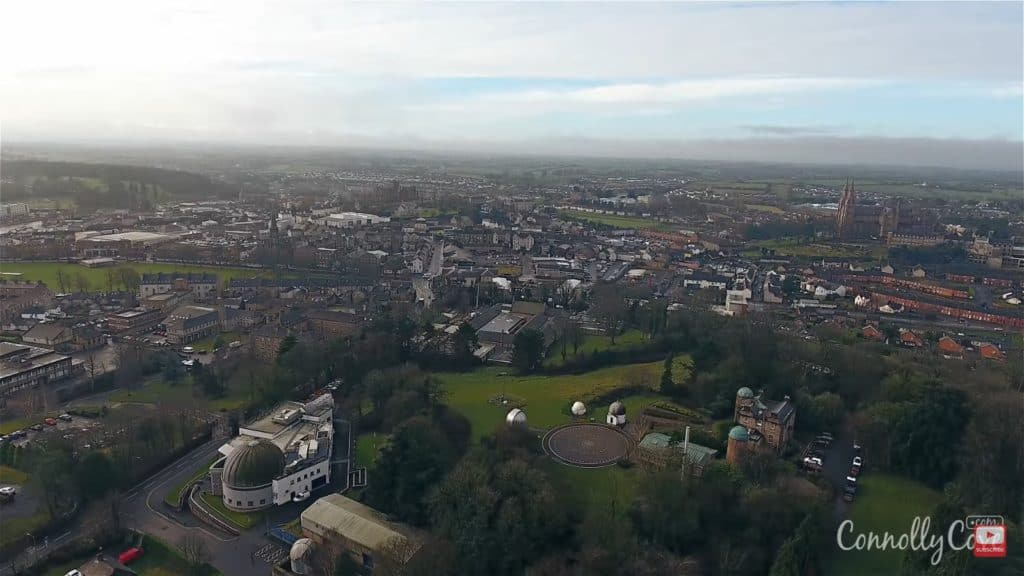
Northern Ireland Tourism Statistics 2018
Several indicators show that tourism and expenditure levels are on the rise in Northern Ireland. Here are the latest statistics about the tourism sector in Northern Ireland in 2018:
- In comparison to 2017, a total number of 5 million visitors spent a whopping £968 million during their trips, which means there was a £42 million increase in spending than the previous year.
- This increase in spending is mainly due to visitors from neighbouring markets; Republic of Ireland and Great Britain, as well as the domestic market. The favourable exchange rates have played a role as well in encouraging visitors from the Republic of Ireland to spend more.
- The average amount of money spent per day was about £2.7 million, in comparison to 2017’s £2.5 million spending each day.
- The thriving increase came from the Republic of Ireland, where there was an increase of 44% of nights spent in Northern Ireland. However, while the numbers from Great Britain remained flat, there was a significant decline in the international market.
- The greater number of trips were both business trips, as well as trips for visiting friends and family.
- While the number of Northern Ireland citizens holidaying at home declined, both visits from the Republic of Ireland as well as Great Britain and overseas saw a slight increase, at 7% and 12% respectively.
- Overnight visitors to Northern Ireland were a groundbreaking 2.8 million visitors from outside of the country. The increase was led by visitors from Republic of Ireland with an increase of more than 23%, while visits from Great Britain and overseas increased only by 2%.
- Despite the unprecedented growth in domestic travels back in 2017, more Northern Ireland residents travelled outside of the country to the Republic of Ireland and overseas in 2018, leaving this growth line flat for this year.
- The average number of days of each trip was down in 2018 by 6% with 3.3 days, in comparison to 3.5 in 2017.
- Average spending for every trip in Northern Ireland was £194, with a 2% increase in comparison to 2017.
- Average spending per night was at £59, with an 8% increase in comparison to 2017.
- Northern Ireland residents who travelled domestically in 2018, spent more on their travels than in 2017, with more than an 11% increase.
- The most visited local attractions in Northern Ireland in 2018; the Giant’s Causeway and Titanic Belfast, welcomed more visitors in comparison with 2017, with a 5% increase.
- 128 cruise ships docked in Northern Ireland in 2018, in comparison to 2017’s 112 cruise ships.
- The year 2018 was another record year for the hotel business in terms of bed sales and rooms, with hotel stocks keeping a steady increase throughout the year.
- The majority of trips, 30% of trips, to Northern Ireland were taken during the third quarter of the year; from July to September.
- Traveling for holiday dominated the overnight trips, with 47% of the trips being for that purpose, while only four out of every ten trips were to visit family and friends.
- The Northern Ireland market was responsible for 44% of the total of overnight trips, 28% of all Northern Ireland visits and 31% of the spending.
- Visitors from the Republic of Ireland were responsible for 12% of overnight trips, 9% of Northern Ireland nights and 11% of the spending.
- Visitors from Great Britain accounted for 29% of all overnight trips to Northern Ireland, 35% of all nights and 34% of the spending.
- Overseas markets accounted for 16% of overnight trips to Northern Ireland, 28% of all nights and 24% of the spending.
- Visitors from mainland Europe, including the French and German markets, accounted for 7% of all overnight trips to Northern Ireland, 12% of all nights, 7% of overnight holiday trips in Northern Ireland and 9% of the spending.
- Visitors from the French market accounted for 16% of the total of trips from mainland Europe to Northern Ireland, 19% of the total of holiday trips, 16% of the total nights in Northern Ireland and 15% of the total of spending from visitors from mainland Europe.
- Visitors from the German market accounted for 21% of the total of trips from mainland Europe to Northern Ireland, 28% of the total of holiday trips, 20% of the total nights in Northern Ireland and 18% of the total of spending from visitors from mainland Europe.
- Visitors from other European countries included the Netherlands, Italy and Spain, with Spain dominating the number of trips, nights, the amount spent and the average sum of money spent during each trip. Visitors from the Netherlands spent more a night than Italian and Spanish visitors, while Spanish visitors also stayed for the longest periods.
- The majority of Italian visitors, 74%, travelled to Northern Ireland for holidays, in comparison to those from the Netherlands and Spain.
- Visitors from Spain mostly travelled to Northern Ireland to visit friends and family with 59%, while 13% of visitors from the Netherlands travelled to Northern Ireland for business and other purposes.
- Visitors from North America, especially the USA, accounted for 6% of all overnight trips to Northern Ireland, 8% of overnight holiday trips, 9% of all nights and 9% of the spending.
- Visitors from the Australian market accounted for 40% of the total of other trips overseas to Northern Ireland, 37% of the total of holiday trips, 44% of the total of all nights and 35% of the spending from other overseas markets.
- Visitors from the remaining overseas markets accounted for 3% of all overnight trips to Northern Ireland, 4% of overnight holiday trips, 6% of all nights and 6% of the spending.
- To sum up, there was a total spending of £968 million in 2018, with a 5% increase than 2017, there were 5 million trips in total, with a 3% increase in comparison to 2017, there was a 3% decrease in overnight stays which amounted to 16.3 million overnight stays, there were 1 million holiday trips from outside Northern Ireland, with an increase of 11% and the average amount spent each day amounted to £2.7 million, up from the £2.5 million of 2017.
Northern Ireland Tourism Statistics 2017
In this year, different factors were driving the tourism sector in Northern Ireland forward, with more visitors, more spending and more cruise ships slicing through the waters of Northern Ireland’s ports.
- From January to December 2017, Northern Ireland was the chosen travel destination of 4.9 million visitors, who were found to have spent more time in NI, in comparison to the same period during 2016.
- The number of visitors in 2017 spent a staggering £926 million, which is £76 million more than the previous year, about a 9% increase.
- This significant increase in spending is mainly due to increase in spending by tourists from Northern Ireland, Republic of Ireland and overseas tourists.
- A great number of visitors were overnight visitors to NI, and they spent an average of £2.5 million a day, for the entire length of the year.
- Significant growth was recorded in all fields of the tourism industry, the domestic market in particular.
- There were 2.7 million visitors from outside of Northern Ireland.
- 2.5 million trips were made to Northern Ireland during 2017, with the highest numbers coming from both the domestic market as well as from the Republic of Ireland during the holiday season.
- In regards to levels of occupancy as well as sales for hotels in Northern Ireland, 2017 was a record year of occupancy.
- Northern Ireland’s most visited attraction in 2017 was The Giant’s Causeway, with more than 1 million visitors, which is the highest recorded number of visitors in one year, for a single attraction.
- Nineteen more cruise ships docked in Northern Ireland’s bays in 2017, with a total of 112 cruise ships for the entire year, in comparison to 2016.
- At the beginning of 2017, trips and spending coming from Great Britain increased by merely 1% each.
- Trips and spending from overseas saw significant increases in comparison to 2016 with 5% and 9% respectively. This increase is mainly due to the haul markets, mainly Australia and New Zealand, which had an increase of 18% in 2016 due to a higher percentage of spending.
- The European market didn’t see much increase, just by 1%, due to a decline in large markets such as Germany, Italy, France and the Netherlands. However, visitors from Europe did spend more during their trips to Northern Ireland.
- There was an increase of 3% in North American visitors, mostly Canadians, which represents a 14% increase, that were visiting Northern Ireland. American travellers however, were mostly put off of traveling to Northern Ireland because of the lack of direct flights to the island.
- Overnight trips to Northern Ireland from visitors from the Republic of Ireland increased by 6% according to the CSO. This increase can be attributed to the high number of holiday spenders, which amounted to 237,000. With an increase of £16 spent each night on holiday, in comparison to the period from January to December of 2016.
- A great portion of the success in luring in visitors from the Republic of Ireland is due to the promotional campaigns during the spring and autumn seasons of 2017. In addition to good exchange rates and that more of the Republic of Ireland’s visitors booked fully serviced accommodations, such as hotels, B&Bs and guesthouses, in comparison to the previous year of 2016.
- In comparison with 2016, more Northern Ireland residents preferred to holiday at home. They took about 2.2 million overnight trips, which represents an 11% increase or 209,000 more trips than the previous year. The increase is due to two reasons, making holiday trips as well as visiting family and relatives.
- Increases in holiday trips from Northern Ireland residents amounted to 1.5 million trips more, which represents an increase of more than a fifth in comparison to 2016. This was followed by an increase in domestic flights, domestic night stays as well as staying for longer periods of time.
- In comparison to 2016, £32 million more were spent by Northern Ireland residents on vacation on the island, due to the increase in the number of trips as well as the higher spending rate per trip.
- Accommodation services, including hotels, B&Bs, guesthouses and guest accommodations saw an increase of 5% in the booking of bed spaces in 2017.
- Demand for hotel occupancy and sales was at a record high in 2017, with hotels accommodating more than 300,000 guests on average, every month.
- In general, trips to Northern Ireland increased by 6% with 4.9 million trips, spending increased by 9% with £926 million spent, holiday trips increased by 16% with 2.5 million holiday trips and accommodation reservations increased by 11% with 16.9 million nights reserved.
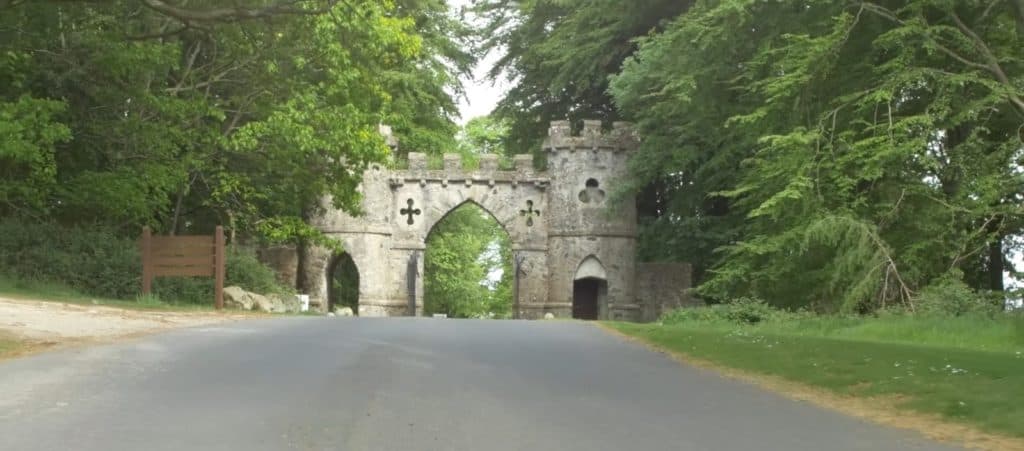
Northern Ireland Tourism Statistics 2016
The NISRA report of the tourism industry in Northern Ireland in 2016 indicates growth in the number of visitors from outside of the island, but also shows a decrease in the number of domestic overnight trips.
- There were 4.6 million overnight trips to Northern Ireland, including trips from both local residents as well as trips from outside of the island. The total spending during these trips in 2016 amounted to £851 million.
- There were 2.6 million overnight trips to Northern Ireland from external visitors, with a total spending of £614 million.
- In 2016, hotels in Northern Ireland had an occupancy percentage of 70%, with an estimation of more than 2 million hotel nights were sold.
- Ninety-three cruise ships docked at Northern Ireland’s ports in 2016.
- Statistics show an increase in external tourism between 2011 and 2016, regarding all the previous sectors.
Northern Ireland Tourism Statistics 2015
The 2015 NISRA report about tourism in Northern Ireland indicates there’s growth in the total number of the incoming trips from abroad, at the same time indicating there’s a decrease in domestic travels.
- The total number of trips made to Northern Ireland during 2015 is 4.5 million, including trips made by both local tourists and tourists from overseas. However, the total number of overnight trips did not change much from its 2014 level, with a total of 4.53 million overnight trips.
- In total, 15.5 million nights were spent in Northern Ireland, which represents a 3% increase from 2014.
- Spending during these trips amounted to £764 million in 2015, which represents a 3% increase from 2014.
- Spending during overnight trips to Northern Ireland in 2015 increased by 7% from 2014, to reach £545 million.
- Local attractions saw the same number of visitors in 2015 as 2014, with 17.5 million visits. The Giant’s Causeway welcomed 0.851 million visitors, which represented an 8% increase from 2014. While Titanic Belfast welcomed 0.622 million visitors, which represented a 2% decrease from 2014.
- Hotel occupancy saw a 2% increase in 2015, amounting to 67%. The total of room nights sold in 2015 amounted to 1.9 million.
- Similar to 2014, a total of 67 cruise ships docked at the ports in Northern Ireland, with a total number of 123,000 of both passengers and crew on board.
- Forty-nine percent of the total number of overnight trips made to Northern Ireland in 2015, representing about 2.2 million trips, were made by local residents. Followed by 29% of visitors coming from Great Britain, 7% of visitors from the Republic of Ireland and the remaining 15% from outside Great Britain and Ireland.
- The majority of visitors, 43% who stayed overnight, in Northern Ireland travelled for holiday, while 42% travelled to visit family and friends, with only 10% staying for business and 5% stayed for other reasons.
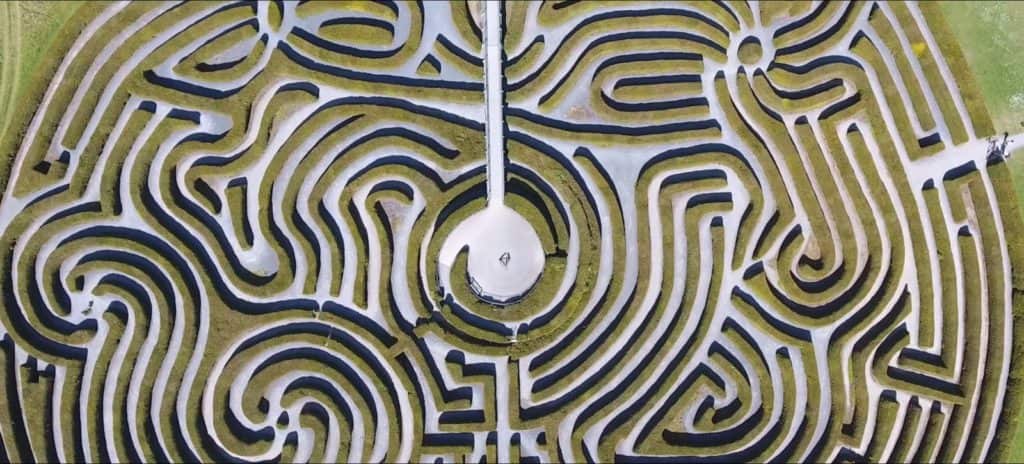
Northern Ireland Tourism Statistics 2014
Reports regarding the tourism industry in 2014 show some growth from the previous year, especially in the number of overnight trips and the number of cruise ships docking in Northern Ireland’s ports.
- Overnight trips in 2014 saw an 11% increase from 2013, with a total of 4.5 million trips, both from domestic tourists and from abroad. Spending during these overnight trips also increased by 4%, almost £751 million.
- Overnight trips by tourists from outside Northern Ireland stood at 2.2 million overnight trips, representing a 4% increase. Despite this, spending by visitors from abroad decreased by 3% reaching £514 million. It’s believed that exchange rates are the reason for this.
- Overnight trips from local residents represented 52% of the total number of overnight trips.
- Overnight trips from the Republic of Ireland saw a 9% increase, while overnight trips from Great Britain only increased by 6%.
- Forty-five percent of the total overnight trips to Northern Ireland were with the purpose of holidaying, while visiting family and friends came right behind with 42% and travelling for business at 8% and other reasons were at 5%.
- Local attractions welcomed visitors 15 million times, which represents a 3% increase than the previous year.
- The top two local attractions were the Giant’s Causeway and Titanic Belfast, with 0.788 million and 0.634 million visits respectively. These numbers represent a 5% increase than the previous year.
- There was a slight increase in hotel occupancy in 2014 with 65%, in comparison to 2013’s 64%. The total number of rooms booked in 2014 was 1.85 million rooms. However, there was a 2% decrease in the occupancy of guesthouses and Bed & Breakfast, which stood at 28% during 2014.
- Sixty-nine cruise ships docked in Northern Ireland’s ports in 2014, carrying a total of 121,000 passengers and crew. This shows that triple the number of cruise ships docked in Northern Ireland during the past three years.
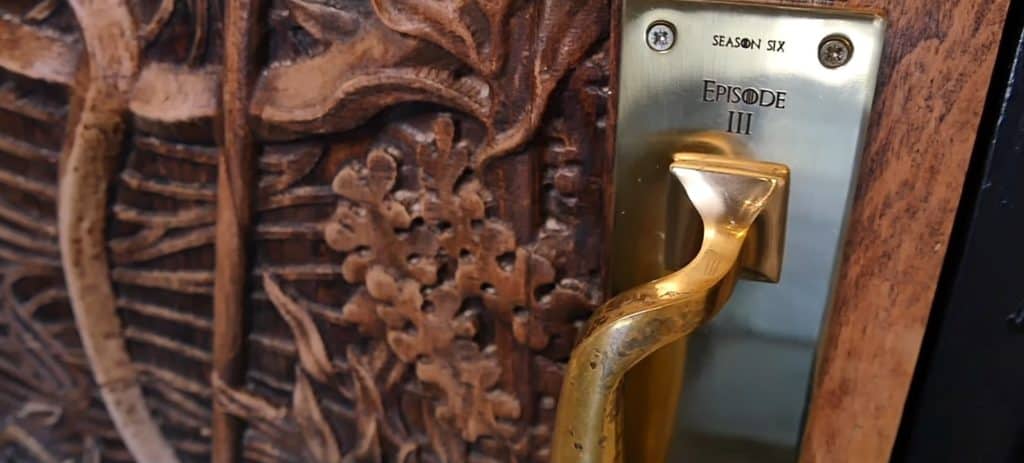
Northern Ireland Tourism Statistics 2013
The annual report regarding Northern Ireland tourism combines the efforts and results of NISRA with resources from the Republic of Ireland. The report shows statistics about all trips and overnight trips made to Northern Ireland and the purposes behind them, total spending, top local attractions and visitors arriving through cruise ships.
- There was a 2% increase in the total number of overnight trips made to Northern Ireland, from both domestic visitors and visitors from abroad. The total number stood at 4.1 million visitors in comparison to 4.0 million in 2012.
- The total number of overnight trips taken by visitors from abroad reached 2.1 million, which represents a 6% increase in comparison to 2012.
- The majority of visitors from abroad came from Great Britain with more than a 13% increase or 131,000 visitors, followed by visitors from overseas with more than a 2% increase or 9,000 visitors while there was a 7% decrease in the number of visitors from the Republic of Ireland, down 30,000 visitors.
- The number of visitors from both Great Britain and overseas increased by 9% or 1.7 million visitors.
- The total number of overnight trips made by domestic tourists decreased by 2% to reach 2.0 million, with 34,000 less visitors than the previous year.
- Overall spending of all tourists, both domestic and from abroad, increased by 5% to reach £723 million, which is a £33 million increase from 2012.
- Visitors from Great Britain and overseas were responsible for the total increase in overnight spending by more than 9% or £531 million. From this amount, visitors from Great Britain accounted for more than 12% or £273 million and visitors from overseas accounted for more than 15% or £201 million.
- Overnight spending by both domestic tourists and those visiting from the Republic of Ireland saw a significant decrease by 8% which is equivalent to £22 million, to reach £249 million. Overnight spending by domestic tourists fell by 5% and by 18% for visitors from the Republic of Ireland.
- The total number of nights spent by visitors to Northern Ireland increased by 5%, from those domestic overnight visitors accounted for 17% but the number of nights spent by external visitors remained the same.
- The number of overseas tourists visiting Northern Ireland for holidays did not change from the previous year. However, there was a 5% increase and a 7% increase in the numbers of visitors traveling for holiday from Great Britain and overseas respectively. On the other side, domestic tourists and those from the Republic of Ireland holidaying in Northern Ireland decreased by 15%.
- More than 22% of visitors from Great Britain came to Northern Ireland to visit family and friends, while there was a 25% decrease in the number of domestic tourists visiting family and friends.
- Northern Ireland residents were behind the increase in business trips by more than 20%.
- The numbers of visitors from abroad traveling to Northern Ireland for either visiting friends and family or business purposes increased by more than 14% and 6% respectively.
- Northern Ireland residents took a total of 7.5 million day trips in Northern Ireland, which unfortunately represents a 12% decrease from 2012. From this number there were 2.4 million trips with tourism purposes, which represents more than a 2% increase from 2012. These tourism trips accounted for £68 million of the total tourism day spending, which represents more than a 3% increase from 2012.
- Despite that hotel room occupancy decreased by 1% in 2013 to 64%, there was also a 1% increase in the number of rooms sold in 2013, in comparison to 2012.
- Guesthouse and B&Bs room occupancy also decreased by 1% in 2013, in comparison with 2012.
- Occupancy level for self-catering units increased by 4% in 2013 to reach 31% in comparison to 2012.
- Local attractions in Northern Ireland welcomed visitors 13.4 times, which represent a 6.5% increase from 2012. The highest number of visitors, about 21%, visited parks, gardens and forests.
- The Giant’s Causeway and Titanic Belfast were the two most visited attractions apart from parks, gardens and forests.
- Sixty-two cruise ships docked in Northern Ireland ports in 2012, 57 of them docked in Belfast with more than 101,000 passengers and crew members on board headed to Belfast. The remaining 5 cruise ships docked in Londonderry with 1,757 passengers on board.
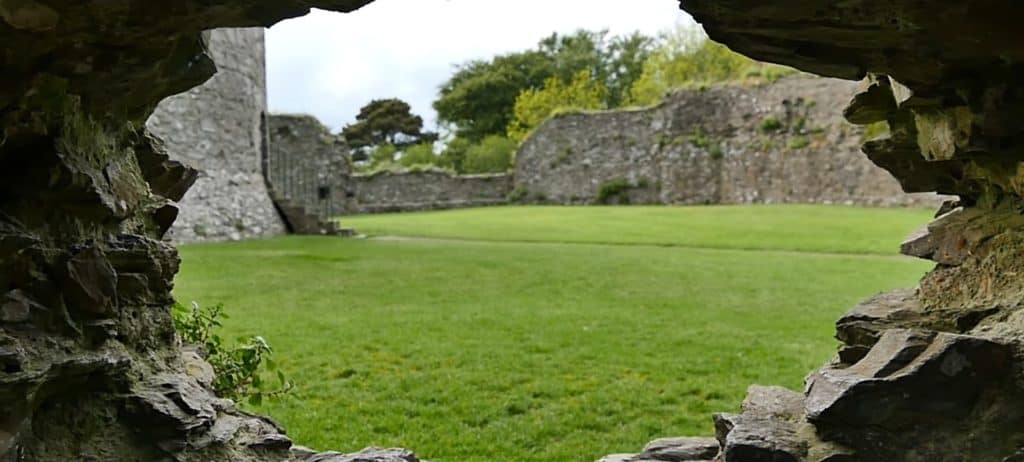
Northern Ireland Tourism Statistics 2012
NISRA’s report of the tourism industry in Northern Ireland in 2012 gives results regarding several sectors such as the total number of trips, overnight trips, spending average, reasons for visiting, most visited attractions, hotel occupancy and visitors arriving through cruise ships.
- There were 3.97 million overnight visits to Northern Ireland made by local residents and visitors from abroad in 2012.
- There was a 3% increase in the number of visitors from abroad who stayed at least one night in Northern Ireland, with a total of 52,000 visitors in 2012.
- The number of visitors from outside Northern Ireland increased by 3% in 2012, which can be divided as follows:
- A total of 0.43 million visitors from the Republic of Ireland, with a 16% increase which is equivalent to more than 60,000 visitors.
- A total of 1.03 million visitors from Great Britain, with a 2% decrease which is equivalent to 18,000 visitors.
- A total of 0.52 million visitors from overseas, with a 2% increase which is equivalent to more than 10,000 visitors.
- The number of visitors from Great Britain and overseas combined hasn’t increased much since 2011 where it was 1.56 million, to 1.55 million in 2012.
- There was a 2% decrease in the total number of overnight visits by domestic visitors to reach 1.98 million in 2012, which is 48,000 visits less than 2011, which had 2.03 million overnight visits by domestic visitors.
- There was a 7% increase, equivalent to £42 million, in the total spending by both domestic visitors and from abroad, which reached £683 million in 2012, in comparison to the £640 million of 2011.
- There was a 5% increase, equivalent to £25 million, in spending as well by visitors from outside Northern Ireland staying at least one night, which reached £488 million in 2012, in comparison to £463 in 2011.
- There was a 19% increase in the number of visitors from outside Northern Ireland who said they travelled for holiday, which brought their number from 0.53 million to 0.63 million in 2012.
- There was a 6% decrease in the number of visitors from outside Northern Ireland who said they travelled to visit friends and family, which decreased their numbers by 63,000.
- The rate of hotel room occupancy increased to 65% in 2012, in comparison to 59% in 2011. While room occupancy of Guesthouses and B&B increased to 33% in 2012, in comparison to 29% in 2011.
- Occupancy of bed space in hotels increased to 45% in 2012, in comparison to 41% in 2011. While occupancy of bed space in Guesthouses and B&B increased to 23% in 2012, in comparison to 21% in 2011.
- The highest occupancy of rooms and beds went to hotels in Belfast and Castlereagh with 75% and 54% respectively.
- The lowest occupancy of rooms and beds went to hotels in the mid west with 46% and 30% respectively.
- The highest occupancy of rooms was in the North East with 35%, while the lowest was in the Mid West by 20%.
- According to the Derry Visitor and Convention Bureau, the number of cruise ships that docked in Derry in 2012 is 8 ships, with a total of 4,299 passengers.
- According to the Belfast Visitor and Convention Bureau, the number of cruise ships that docked in Belfast in 2012 is 45 ships, with a total of 80,000 passengers and crew.
Final Thoughts
It has been a difficult two-year period for the tourism industry not just in Northern Ireland but in the entire world. With restrictions beginning to ease and businesses having hope they’ll get on the road to recovery soon, people are the most excited to get back out there and explore the wonders of this beautiful island.
It is really interesting to look at over a decades worth of statistics to see how much changed in the last 10 years. The increasing visitor numbers definitely give us hope as we anticipate life and the tourism industry after Covid.
Thank you for reading this article. We hope that it has provided some value to you, as we have gained insightful knowledge creating it.
Here are some more statistics pages on our site that you may enjoy:
Republic of Ireland Tourism Statistics | UK Travel Statistics | Italian Travel Statistics | USA Travel Statistics | Australian Travel Statistics


